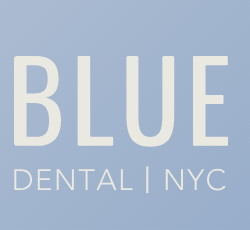Tooth Sensitivity on the Upper East Side, Manhattan
Why Choose Dr. Min for Tooth Sensitivity
- Columbia-trained prosthodontist focused on cause-first diagnosis—not just masking symptoms.
- Award-winning precision and military-honed discipline—expect meticulous records and calm, clear communication.
- Evidence-based protocols for enamel protection, gum health, and bite balance.
- Digital diagnostics (photos, cold testing, low-dose X-rays/CBCT when indicated) to pinpoint the source.
What Is Tooth Sensitivity?
A short, sharp pain to cold, sweet, touch, or air occurs when dentin tubules are exposed (through enamel wear or gum recession) or when the pulp is inflamed from decay, cracks, or bite stress.
Common Causes
- Gum recession exposing root dentin (periodontal disease, aggressive brushing)
- Enamel wear/erosion (acidic drinks, reflux)
- Tooth grinding (bruxism) flattening enamel and opening dentin tubules
- Cavities or leaking fillings
- Cracked or chipped teeth
- Recent whitening or dental procedures (usually temporary)
- Exposed root surfaces after orthodontics or thin biotype gums
How We Diagnose
- Symptom history (triggers, duration, location)
- Cold test, air stimulus, and bite test
- Magnification, transillumination for micro-cracks
- Periodontal charting to assess recession and gum health
- Digital X-rays; CBCT for complex or persistent cases
Treatment Options We Provide/Coordinate
Conservative, First-Line
- Fluoride varnish and prescription-strength fluoride toothpaste (5,000 ppm)
- Desensitizing agents (potassium nitrate, stannous fluoride)
- Resin infiltration/micro-sealing of exposed dentin and white-spot lesions
- Bite adjustment to reduce overload on sensitive teeth
- Custom night guard if bruxism is present
Restorative / Periodontal Solutions
- Tooth-colored bonding to cover exposed root or worn edges
- Replacement of leaking fillings and repair of chips/cracks
- Onlays/crowns when structure is compromised
- Periodontal grafting referral for severe recession or root coverage
When the Nerve Is Involved
- Root canal therapy for irreversible pulp inflammation or lingering pain, followed by definitive restoration
The Process at a Glance
1) Exam & Testing
Identify the exact cause(s) and map sensitivity triggers.
2) Stabilize
Apply in-office desensitizers/varnish; start prescription toothpaste and habit changes.
3) Definitive Care
Bonding, restoration, bite tuning, guard, or periodontal care as indicated.
4) Review & Maintain
Follow-up to confirm relief; adjust plan if triggers persist.
Prevention & Daily Habits
- Use soft brush, gentle pressure, and fluoride toothpaste; avoid abrasive whitening pastes.
- Wait 30–60 minutes to brush after acidic foods/drinks; rinse with water first.
- Limit all-day sipping of acidic/carbonated beverages; manage reflux with your physician.
- Wear your night guard if prescribed; avoid chewing ice and very hard foods.
- Keep regular cleanings and exams to catch small issues early.
Comfort, Safety & Materials
- Most sensitivity visits are no-shot; gentle technique if anesthesia is needed.
- BPA-free materials; meticulous moisture control for durable bonding.
- Occlusion-focused finishing for comfortable chewing.
Cost & Insurance
- Transparent, itemized estimates tailored to the cause and treatment type.
- Many PPO plans cover fluoride, desensitizers, necessary fillings, and periodontal therapy; coverage for guards or grafting varies—our team verifies and files claims.
- Phased care and flexible payment options available.
Frequently Asked Questions
Will sensitivity toothpaste really help?
Yes—used
twice daily, it can significantly reduce symptoms in 2–4 weeks. We also boost relief with in-office varnish or sealers.
How do I know it’s not a cavity or crack?
We test and image the tooth. If pain
lingers after cold or occurs on
bite/release, we investigate decay or cracks and treat accordingly.
Can whitening cause sensitivity?
Yes—usually temporary. We can adjust concentration, add fluoride/desensitizers, or stage treatments to keep you comfortable.
Will this go away on its own?
If caused by erosion, recession, decay, or bite stress, it typically
persists until the cause is treated.
About Dr. Daniel Min
BA, University of Texas at Austin
DDS, University of Texas (American Esthetic Dental Association award; “Student of the Year” in clinical performance)
MS in Prosthodontics, Columbia University; former part-time clinical professor
U.S. Army veteran; current Army Reserve officer
Member: Academy of Prosthodontics; International Congress of Oral Implantologists
Service Area
Conveniently located on the Upper East Side and serving patients across Manhattan and the greater New York City area.
Call to Action
Iced coffee hurts? Cold air zings?
Book a tooth sensitivity evaluation with Dr. Daniel Min for fast relief and a lasting, cause-based solution.

